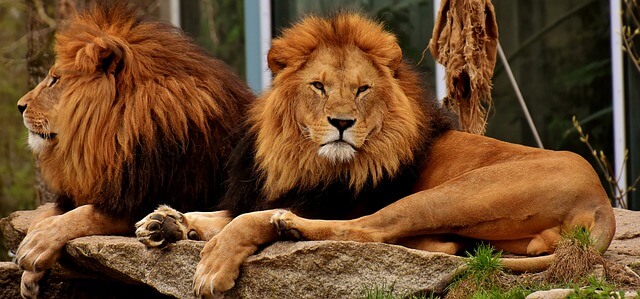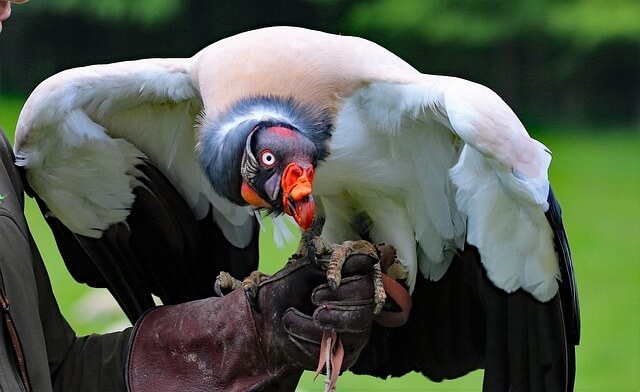The cat family has more than 30 species – from 350-pound tigers to 1.5-pound rusty-spotted cat (world’s smallest cat). Our pets are relatives of wild cats, European and African. Both the lion, and the tiger, and of course the neighbor cat belong to the same cat family. At the same time, there are much domestic cat breeds than wild feline species. Each animal has some differences from others. Wild cats are not an exception; each species has its own “zest”.
Thus, this article is exactly about such interesting facts from the life of wild cats.
● The genus of the cat (Felis) belongs to the mammal (Mammalia), the order of the predatory (Carnivora), the feline family (Felidae).
● Felines are typical predators. True, the not carnivorous species is known – the Civet cat, which mainly eats fruit (preferably coffee cherries). They hunt at night or in the early morning, attacking the victim from an ambush. Large cats – lions, tigers, jaguars, leopards – track down prey, sneaking up to it so as to be as close as possible, but go unnoticed. Having thrown the victim onto the ground in a swift throw or a jump, the predator kills it with a bite below the back of the head or strangles it by clutching the throat. Among cats, only a cheetah chases prey, but it lacks stamina, and if it can’t catch the intended victim for a certain time, it finally stops the pursuit.
● Large cats are individualists, except lions, which often hunt in groups. While one lioness bypasses the herd of zebras or other and looks for a place to lie low, the rest of the lionesses distract the attention of the victims, appearing openly. When the ambush is ready, one of the lionesses drives the flock right into the claws of the predators. Lions often take prey away from other animals, mainly hyenas and cheetahs. Except the cheetah, all large cats eat not only fresh meat, but also carrion.
● Wild cats instantly kill their prey by breaking its backbone in the area of the cervical vertebrae. The chance to inflict such an accurate and effective bite is one in a million.
The cheetah is the only cat that cannot hide its claws
● Cougars and African leopards can jump on trees up to 18 feet (5.5 meters high).
● A cheetah is capable of reaching a speed of up to 70 mph (110 km / h), albeit at short distances. For comparison, the speed of a race horse is up to 45 mph (70 km / h).
Everyone knows that the cheetah, the fastest predator on the planet, is on the verge of extinction. There are no more than 20,000 left. The reason of it is not only the thoughtless extermination of these wild animals. In nature, cheetah cubs living in reserves, somehow protected from poachers, do not live up to a year in 70% of cases. In zoos, in the safest conditions, up to 30% of cubs die.
Studies of American geneticists have shown that the loss of the genetic diversity of the species caused the main problem. Practically all living cheetahs are genetically almost identical. The most likely cause of this phenomenon is a kind of long-standing (10-12 thousand years ago) catastrophe, after which one or two pairs of these animals survived.
Thus, all cheetahs are very close relatives who do not receive “fresh blood”, and therefore have the same set of features, received from both the father and the mother. They have completely lost the ability to adapt. Today, the preservation of these beautiful cats is possible only thanks to the enormous efforts of scientists around the world.
The cheetah does not growl and does not meow. Thus, it more like barks, shrieks and chirpes. But it knows how to purr.
● For some reason, the leopard doesn’t hide its long, luxurious tail while climbing on a tree – it hangs it down. Because of what it is easy to detect the animal.
Lion is the only representative of the cats, which lives in organized groups called prides
● Tails of wild cats almost never rise above the back.
● All known white tigers are Bengal. Loss of color is caused by a recessive gene.
The most famous cannibal cats are tigers. For example, a tigress killed more than 430 people
in 1986 in India
● Stripes on the fur of a tiger never repeat, which is used in observing and counting animals living in the wild.
● In private menageries and some zoos there are crossbreeds of lions (male) and tigers (females) known as the ligers. These are large cats weighing more than 880 lbs (400 kg). Although, in 1973, the national park of South Africa observed ligres weighing 1,700 lbs (781 kg). They have a light fur with blurred dark stripes, a very calm and friendly character.
If you liked the video - share it with your friends:
● Females of ligers are capable of producing offspring from tigers and lions, since males of ligers are sterile from birth.
● Tigons, hybrids of a male tiger with a female lion, were also obtained artificially. These animals are much smaller than their parents – the weight is about 330 lbs (150 kg).
● The most “innocuous” wild cat is the snow leopard or ounce (Panthera uncia), even if it is wounded, it does not attack people, but will try to crawl away and hide. In addition, the snow leopard bears the title of “the most tailed cat on the planet” – its length reaches 40 inches or 98 cm (three quarters of the body length).
● The clouded leopard (Neofelis nebulosa) got such an interesting name because of its distinctive color, similar to clouds. Their coat has small black specks on it, and these specks have large and much lighter spots. Such a fur pattern resembles clouds.
The clouded leopards have the longest teeth among the wild cats
● Jaguars are pretty strong and agile creatures. They say that they have no rivals, since no other animal can defeat him.
● Hunters killed the last free Central Asian tiger on January 10, 1954 in Turkmenistan on the border with Iran.
● Most wild cats are objects, both legal and poacher hunting. Poachers killed them because of their beautiful fur, sometimes for internal organs and bile (for example, the organs of the tiger are very valuable in Chinese medicine), and sometimes for the sake of “sports interest”, for example, lynx (European and American).
Many species of wild cats are on the verge of extinction and are listed in the International Red Book. Among them, the cheetahs have a special place
● Lynx has long lived in almost the entire forest zone of the northern hemisphere, and everywhere its history is dramatic. For centuries, a man hunted it mercilessly. The governments even used to pay for killing such precious wild animals.
Too late, people realized that the lynx deserves attention and care. It has already been completely destroyed in most of Europe.
● At the beginning of our century, annually people killed approximately 800-1000 snow leopards in the world. In some years, they sold up to 500 skins of these animals at the Nizhny Novgorod Fair in Russia.
● By the beginning of the XIX century, people exterminated tigers in Colchis and Ajara.
In the thirties of our century, sellers used to send entirely frozen tigers’ carcasses to China quite legally.
● At the beginning of the 20th century, people killed 10 or more thousand leopards every year in Africa and Asia. Moreover, since the 1950s, the hunt for the supercat has begun in unprecedented numbers: annually hunters killed more than a hundred thousand of these beautiful animals.
Poachers killed 66 tigers the last two years of the 20th century on the island of Sumatra, which is about 20 percent of their total population
● Some time ago, hunters received a premium of about $ 1,500 for a dead cougar in the USA.
Wild cats live on all major islands and continents. Most prefer to live in a subtropical and tropical climate, less often in a temperate climate. All cats have only terrestrial lifestyles, inhabiting mostly wooded areas, sometimes deserts, mountains and savannas.








